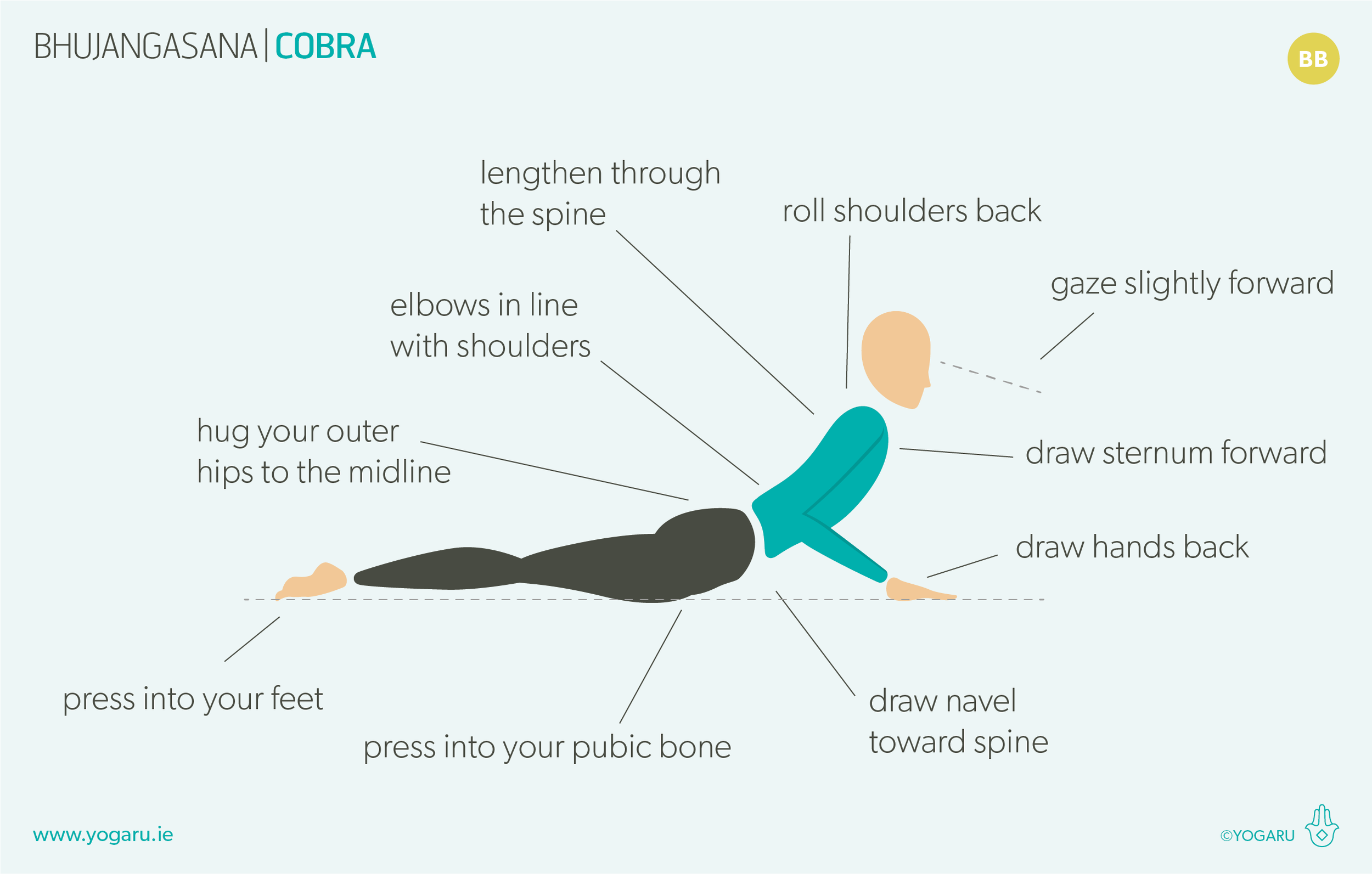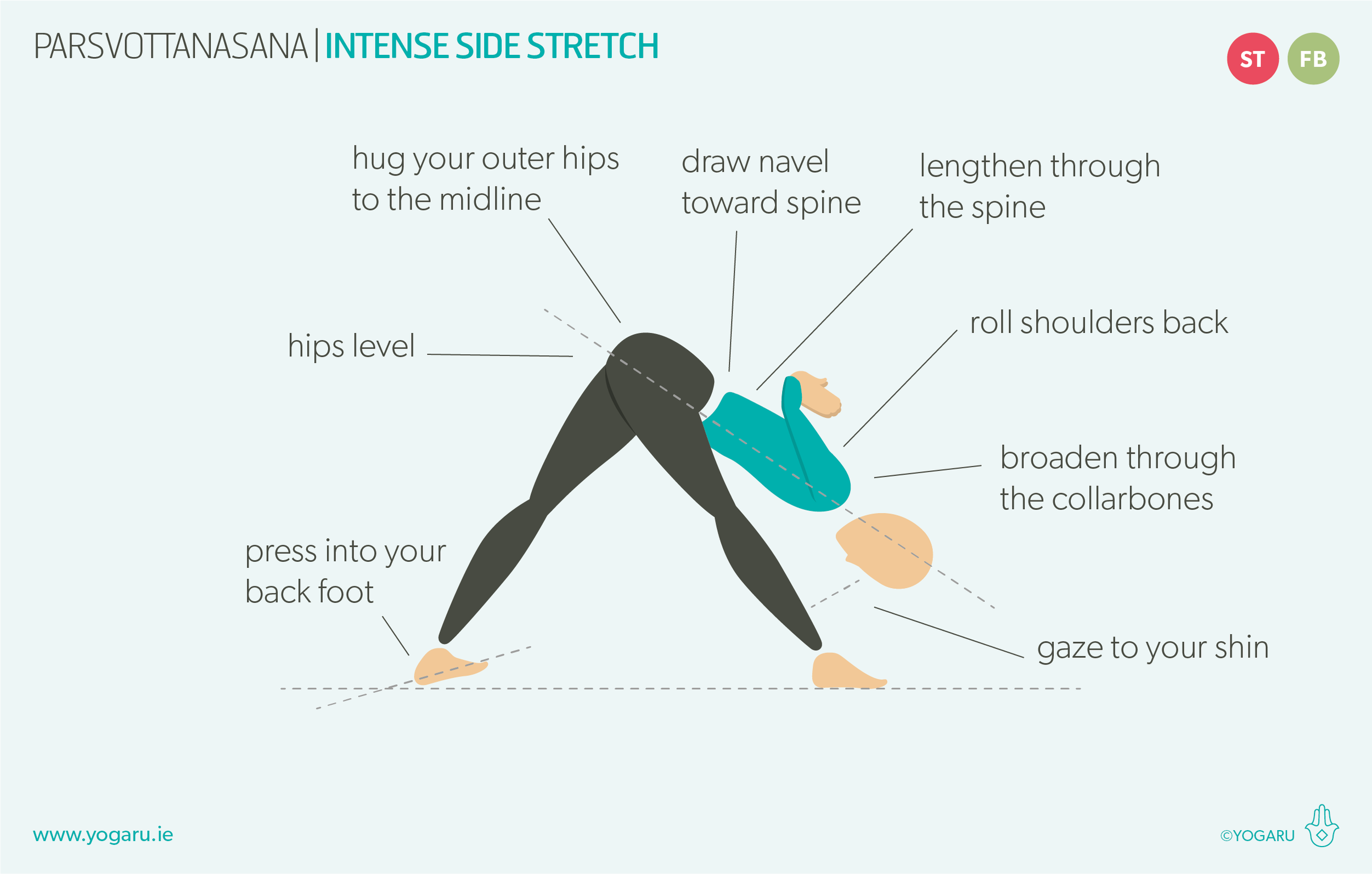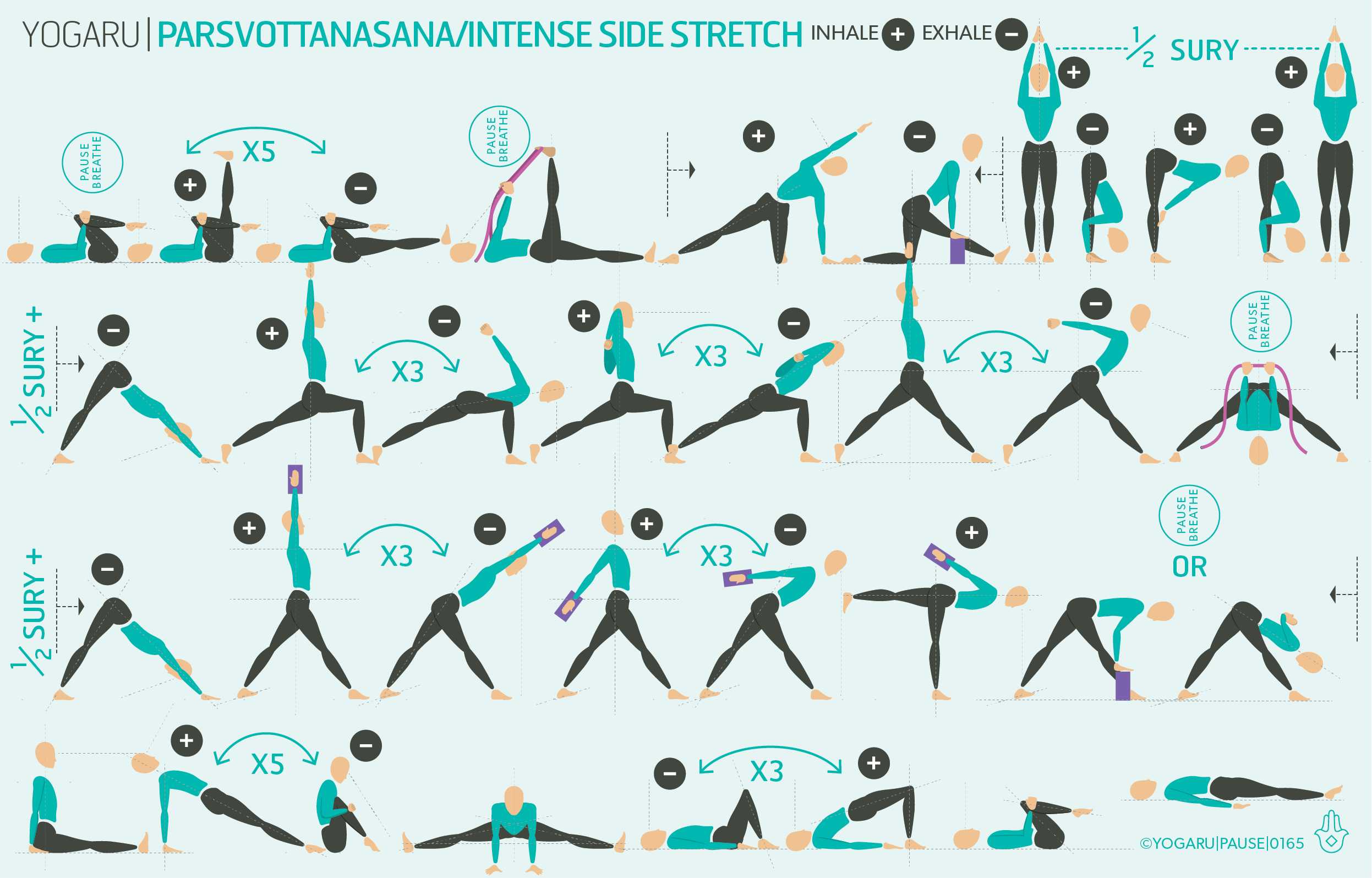BACKBEND FOR ALL
Bhujangasana/Cobra is one of the more accessible backbends and is the perfect alternative in a Sun Salutation if Urdhva Mukha Svanasana/Upward Facing Dog is not part of your practice. It is a heart opening backbend that stretches the front upper body and strengthens the back upper body. Backbends come more easily to the lower back (lumbar spine), making it more susceptible to overarching. As with all backbends, care needs to be taken to distribute the bend though the whole spine. In Bhujangasana/Cobra you have good control of how far you come into the backbend and can easily lower back down if you start to feel any discomfort in your lumbar spine. This version of Bhujangasana/Cobra is also sometimes called Baby Cobra which is kinder on the lumbar spine than its sister pose King Cobra. In Baby Cobra the arms stay bent, bringing the upper body lower than in King Cobra, where the arms are straight, giving a more dramatic curve to the lumbar spine.
Similar to Salabhasana/Locust, Bhujangasana/Cobra is a backbend that moves against gravity – giving you the opportunity to strengthen the back, more so than backbends like Ustrasana/Camel which moves with gravity to bring you into the pose. Bhujangasana/Cobra is also a great pose to counteract long periods of sitting and support good posture. It helps to realign your spine and stretches the hip flexors which get stuck in a shortened position when sitting.
THE BENEFITS OF BHUJANGASANA/COBRA
Bhujangasana/Cobra strengthens the spine, arms, glutes and hamstrings. It stretches the chest, core and hip flexors. It helps you find your connection to the earth and ground down to grow roots. As a backbend it stimulates the nervous system, aids digestion, energising, eases stress, tension, anxiety and depression. It also helps expand and the breath, promoting healthy lung capacity and ease symptoms of asthma and sleep apnea.
EXPLORING BHUJANGASANA/COBRA IN YOUR PRACTICE
Unlike many other peak poses Bhujangasana/Cobra is gentle enough to add into your practice from early on. In the warm up on the first row you will take Naraviralasana/Sphinx to prepare for your peak pose which follows. Press your forearms into the ground and draw your chest between your shoulders until you feel a lovely stretch along the skin from your belly button all the way to your breastbone. Soften your shoulder blades down your back in preparation for the following pose of Bhujangasana/Cobra to ensure your shoulders are not bunching up to your ears.
There are two ways to approach Bhujangasana/Cobra – with the hands pressing into the ground to help pull the chest forward and up, and with the hands slightly lifted off the ground. Pressing into the hands helps you find a lovely stretch in the abdominal region and the chest. With the hands lifted you may not come up as far, but you are strengthening all the muscles along your spine as they work to lift your upper body against the weight of gravity. Towards the end of the sequence there is also an opportunity to take a slightly more passive version of Bhujangasana/Cobra using a bolster or a rolled blanket just above your frontal hip bones. Very gentle forward bends and twists are the perfect way to counterpose a backbend. The perfect way to finish this sequence would be with a restorative twist.
ALIGNMENT CUES
Pause for a few of the different versions of Bhujangasana/Cobra in this sequence, feel your lungs stretch, your ribs expand and breathe drawing you forward and up.
Have a read of the tips below and either print out the sequence or save it onto your device:
Lie on your front, feet hip width apart, top of the feet on the ground with your hands either side of your sternum.
Press your feet, thighs and pubic bone firmly to the ground, Inhale, press into your hands, lift your chest up and lengthen forward, track your elbows in line with your shoulders.
Reach your toes back, firm your legs, hug your outer hip to the midline, pull your hands back, draw your sternum forward and up, draw your navel towards your spine. Lifting with the whole back, gaze slightly forward.
To save the images for personal use click and hold down the image until the ‘save image’ option appears; on Mac hold down ‘control’ and click the image to get the option box; on PC right click on the image to get the option box. Scroll down in the ‘option box’ and click ‘save image’.
Ruth Delahunty Yogaru







